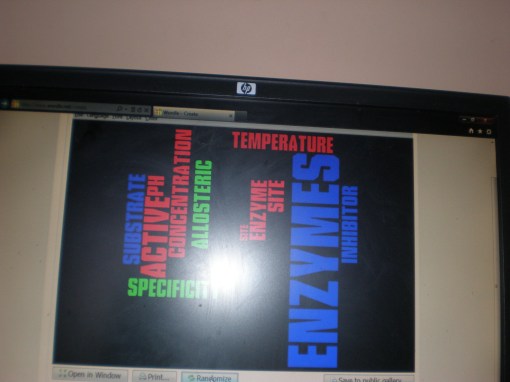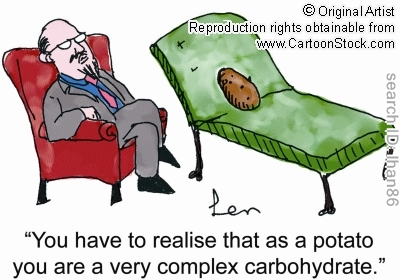This is my life! I am an atrial cardiomyocyte in zebra fish. I originated in the atrium of my organisms heart. I am special due to my ability to aid in regeneration of my zebra fish’s heart this makes him a model organism. In case of ventricular injury or a myocardial infarction I can regenerate and repair the ventricle by a process known as transdifferentiation. This allows me to turn into a ventricular cardiomyocyte. Cardiomyocytes are large cells 20 micrometers and they are made up of microfibrils, mitochondria, nucleus, sarcoplasmic reticulum and cytosol. Microfibrils are the rodlike bundle that forms the contractile elements within cardiomyocytes
Abzymes and their applications
An abzyme is a monoclonal antibody with catalytic activity. Abzymes are found in normal humans and in patients with autoimmune diseases, where they can bind to and hydrolyze DNA. Antibodies with catalytic activities were isolated from sera of patients with different diseases. Antibodies with protease activity against vasoactif intestinal peptide (VIP) were first isolated in the serum of patients with asthma. This VIP-ase activity was also shown to be present on proteins that are monoclonal human light chains found in urine of patients with multiple myeloma.
Some applications of abzymes are they have great potential in the pharmaceutical industry. They are used in detoxification of cocaine. They inactivate viruses. High abzyme activity is observed in the blood of pregnant women. Used in HIV treatment. An abzyme has been engineered that degrades the super antigenic region of the gp 120 CD4 binding site. The abzyme does more than bind to the site, it actually destroys the site rendering the HIV virus inert.
Proteins and their applications
Proteins are groups of complex organic macromolecules that contain carbon, hydrogen, oxygen, nitrogen and usually sulfur and are composed of one or more chains of amino acids. Proteins are fundamental components of all living cells and include many substances, such as enzymes, hormones and antibodies that are necessary for the proper functioning of an organism. They are essential in the diet of animals for the growth and repair of tissue.
The four blood types (A, B, AB and O) are differentiated on the basis of the proteins present in each. This is only one of many key roles that proteins play where blood is concerned. If certain proteins are missing or if the wrong proteins are present, blood will fail to clot properly and cuts will refuse to heal. Similarly proteins play a critical role in forensic science, or the application of medical biological knowledge to criminal investigations. Fingerprints are an expression of our DNA, which is linked closely with the operation of proteins in our bodies. The presence of DNA in bodily fluids such as semen, blood, sweat and saliva makes it possible to determine the identity of the individual who perpetrated a crime or of others who were present at the scene.
In addition a chemical known as luminal assists police in the investigation of possible crime scenes. If blood has ever been shed in a particular area, such as on a carpet, no matter how carefully the perpetrators try to conceal or eradicate the stain it can be detected. Luminol reacts to haemoglobin on the blood making it visible to investigators.
Reference
Enzymes MCQ
1 What is activation energy?
A The maximum amount of energy for the reaction to occur.
B Has the highest free energy.
C The minimum amount of energy for the reaction to occur.
D the turn over number
2 What is the turnover number?
A the enzyme commission number
B The number of molecules of substrate converted to product per enzyme molecule per second.
C The action performed by the enzyme.
D The number of molecules of product converted per enzyme molecule per hour.
3 An enzyme with an EC number that starts with 6 belongs to which group of enzymes?
A lyases
B oxidoreductases
C transferases
D ligases
4 Isomerases do what?
A catalyze oxidation- reduction reactions.
B converts isomers
C catalyze transfer of C-N or P containing groups
D catalyze cleavage or bonds by addition of water.
5 Which is NOT true of enzymes?
A Most enzymes are proteins.
B Enzymes don’t speed up the rate of a chemical reaction.
C they are substrate specific
D They emerge from the reaction unchanged.
6 Noncompetitive inhibition is?
A When the inhibitor and substrate bind at different sites on the enzyme.
B When the inhibitor and substrate don’t bind at different sites on the enzyme.
C The inhibitor binds to the enzyme only.
D The inhibitor binds to the enzyme substrate complex.
7 What factor does NOT affect enzyme reaction?
A pH
B Temperature
C Concentration
D Time
8 Delta G double dagger represents?
A transition state
B free energy
C borrowed energy
D substrate production
9 An apoenzyme is?
A active enzyme
B cofactor
C inactive protein part
D protein part
10 Homotropic effect is when?
A The effector may be different from the substrate.
B The enzyme binds to the substrate.
C There is no reaction with the enzyme substrate complex.
D When the substrate itself serves as an effector.
Carbohydrates MCQ
1 Which one best describes endogonic?
A allows energy to flow
B gives energy
C harnesses energy
D shares energy
2 Which one is not a disaccharide?
A lactose
B glucose
C sucrose
D maltose
3 Where do bacteria get their energy from?
A glycolysis
B respiration
C digestion
D photosynthesis
4 What is an epimer?
A It is an asymmetric carbon.
B Something that reacts with an alcohol to form a hemiketal.
C Two sugars that differ only in the configuration around one carbon.
D Two sugars that differ only in the configuration around three carbon atoms.
5 A non-reducing sugar is
A lactose
B glucose
C fructose
D sucrose
6 What is a hemiacetal?
A When an aldehyde reacts with an alcohol.
B When a ketone reacts with an alcohol.
C When two monosaccharides react together.
D When two reducing sugars react.
7 Insulin in the blood stream suggests?
A kidney failure
B heart problems
C diabetes
D cancer
8 Cellulose is made up of:
A beta-D-glucose
B alpha-D-glucose
C alpha-L-glucose
D cellulose
9 Chitin is found in:
A animals
B plants
C the exoskeletons of insects
D the stomachs of ruminants
10 Tests for a reducing sugar is?
A biuret
B benedicts
C ninhydrin
D chromatography
My Enzyme Wordle

So sorry for the flash had to take a pic of it off my computer had trouble uploading it directly off wordle
So we’ve started studying enzymes and they are essential in catalyzing biochemical reactions. All enzymes are made up of proteins . James Somner isolated and crystallized the first enzyme urenase. Kudos to you James. An enzyme allows a reaction to proceed rapidly under conditions prevailing in the cell by providing an alternate reaction pathway with a lower free energy of activation. Important to know an enzyme doesn’t change the equilibrium of the reaction. One of our dear Biochem lecturer’s favourite questions is what is Kcat or the turnover number? This is the number of molecules of substrate converted to product per enzyme molecule per second. Please Remember this important for either MC or structured question.
So I haven’t been blogging in a while and this post is a bit overdue. So we studied proteins in my biochem class and we learnt that a protein is a linear sequence of amino acids linked togetther by peptide bonds. They have primary, secondary, tertiary and quaternary structures. An interesting fact to note is that myoglobin was the first protein to have it’s three dimensional structure solved by X-ray crystallography. Proteins are very important to the human body, imagine if you didn’t have haemoglobin. This is an oxygen binding protein then you wouldn’t be able to transport oxygen in your blood and you would die.


